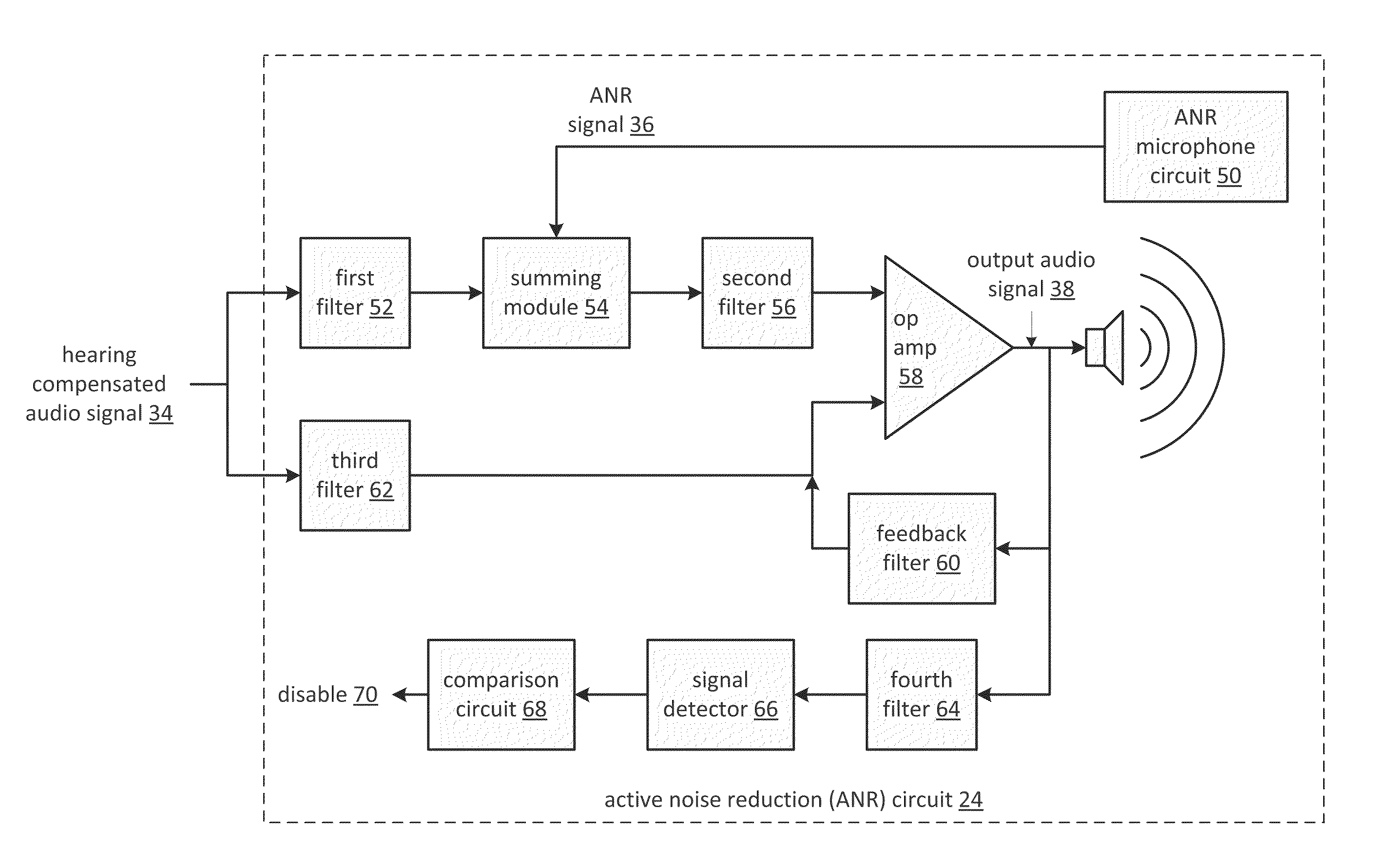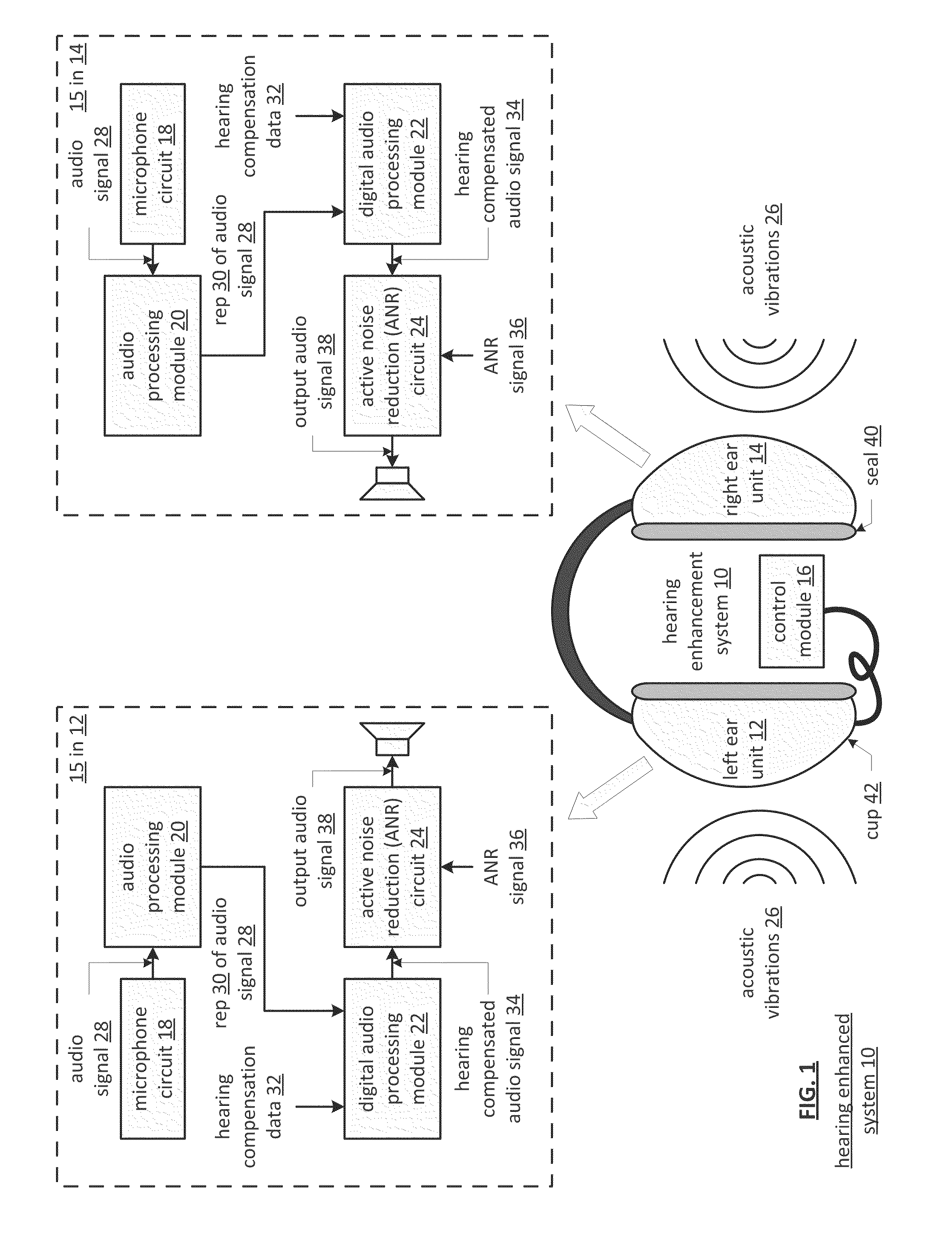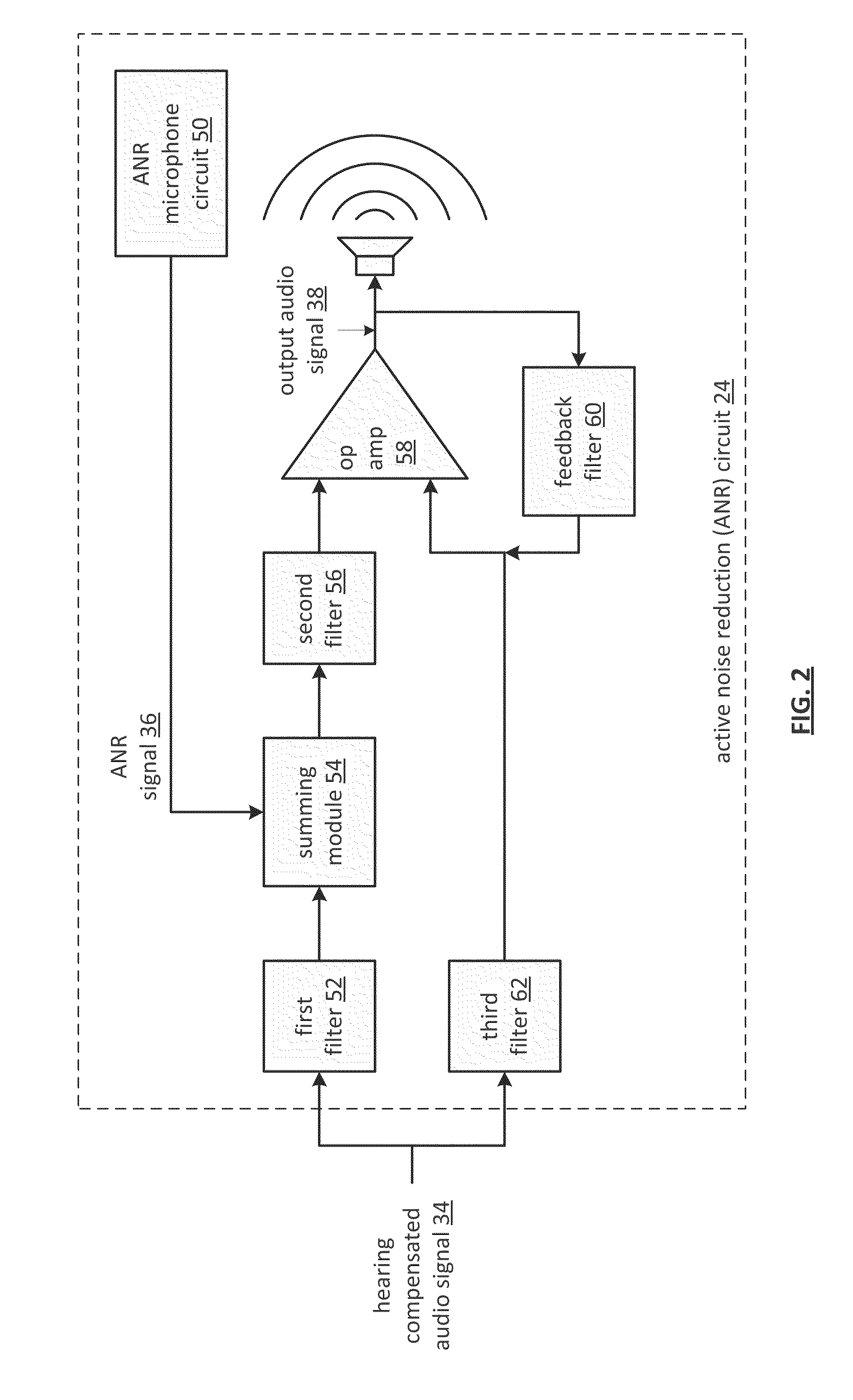Hearing enhancement system and components thereof
a hearing enhancement and component technology, applied in the field of mixed signal processing, can solve the problems of increasing noise level, unstable noise cancelling circuitry, and insufficient conventional noise cancelling circuitry
- Summary
- Abstract
- Description
- Claims
- Application Information
AI Technical Summary
Benefits of technology
Problems solved by technology
Method used
Image
Examples
Embodiment Construction
[0023]FIG. 1 is a schematic block diagram of an embodiment of a hearing enhancement system 10 that includes a left ear unit 12, a right ear unit 14, and a control module 16. Each of the left and right ear units 12 and 14 includes a cup housing 42, a circuit 15, and may further include a seal 40. The circuit 15 includes a microphone circuit 18, an audio processing module 20, a digital audio processing module 22, and an active noise reduction (ANR) circuit 24. In this configuration, the hearing enhancement system 10 provides hear-through with reduced localization issues, provides hearing compensation (e.g., hearing aid), and provides active noise reduction for suppressing loud background noises and loud transient noises. As such, the hearing enhancement system 10 is well suited for use in extremely noisy environments.
[0024]The audio processing module 20, and the digital audio processing module 22 may be separate processing modules or may be a shared processing module. The control modu...
PUM
 Login to View More
Login to View More Abstract
Description
Claims
Application Information
 Login to View More
Login to View More - R&D
- Intellectual Property
- Life Sciences
- Materials
- Tech Scout
- Unparalleled Data Quality
- Higher Quality Content
- 60% Fewer Hallucinations
Browse by: Latest US Patents, China's latest patents, Technical Efficacy Thesaurus, Application Domain, Technology Topic, Popular Technical Reports.
© 2025 PatSnap. All rights reserved.Legal|Privacy policy|Modern Slavery Act Transparency Statement|Sitemap|About US| Contact US: help@patsnap.com



